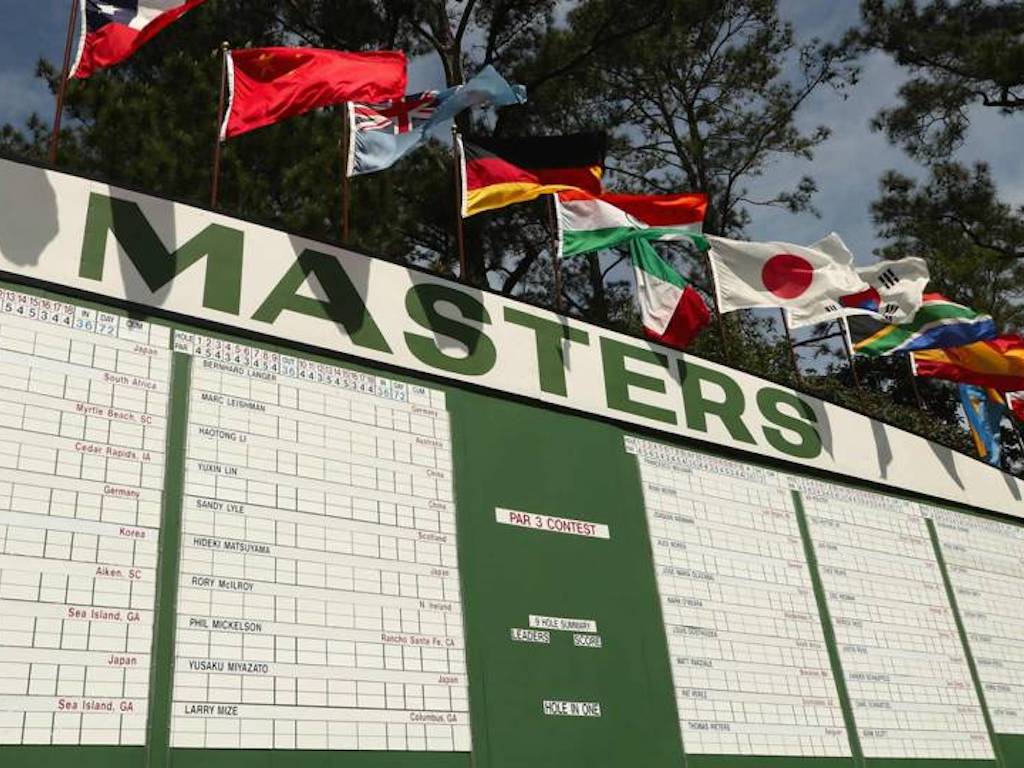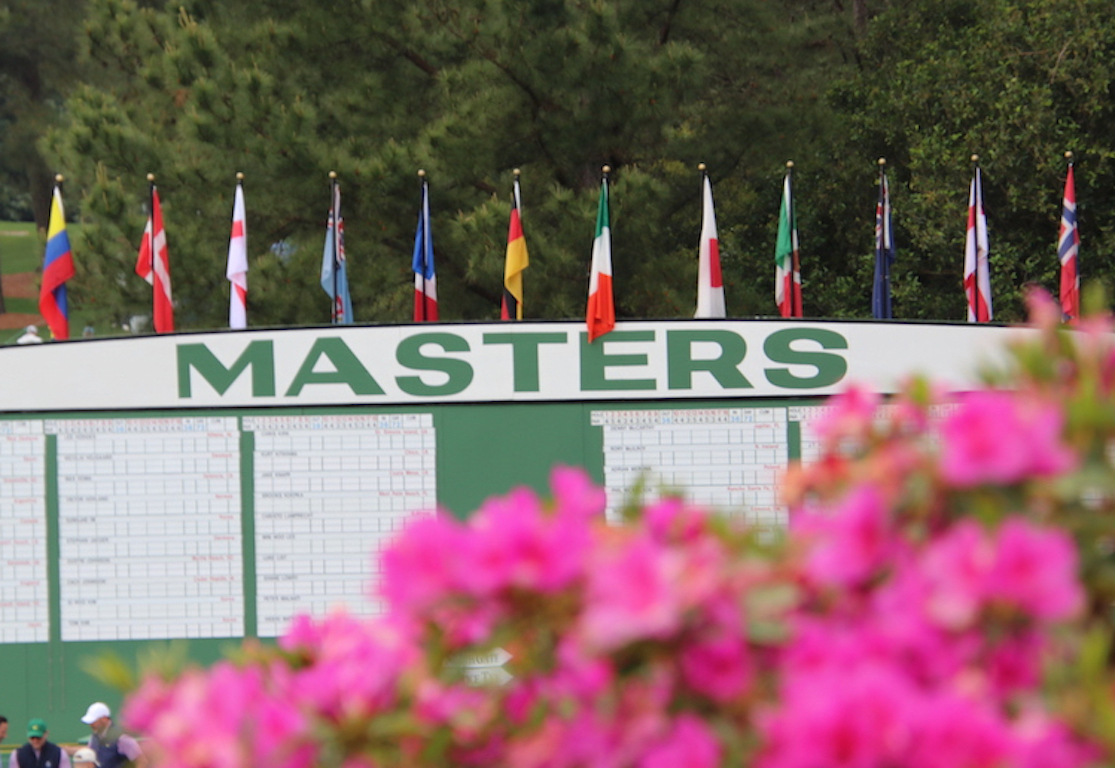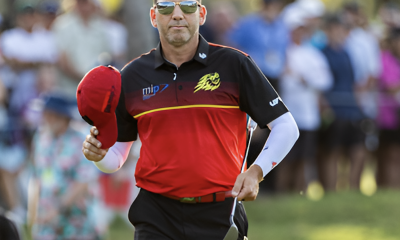News
Oakmont Returns to Its Roots
No other venue has hosted as many U.S. Opens as Oakmont Country Club, what makes this course so unique and what is its history with the U.S. Open?
 The Oakmont story begins in 1903 when avid amateur golfer Henry C. Fownes purchases 200 acres of farmland in the Pittsburg suburb of Oakmont nestled in the Allegheny River Valley. Fownes longed to build a true links style course and with a minimal crew of men and machines fulfilled his dream.
The Oakmont story begins in 1903 when avid amateur golfer Henry C. Fownes purchases 200 acres of farmland in the Pittsburg suburb of Oakmont nestled in the Allegheny River Valley. Fownes longed to build a true links style course and with a minimal crew of men and machines fulfilled his dream.
Fownes and his son worked hard to utilize the existing landscape to create a course rife with challenge and difficulty. At its opening in 1904, Oakmont played to a par of 80 at 6400 yards. Fast forward to 2007, Oakmont has hosted eight more U.S. Opens, its list of winners is a who’s who of golfing royalty, Ben Hogan, Jack Nicklaus, Ernie Els, and Johnny Miller have all been crowned U.S. Open Champion at Oakmont Country Club, and the this year, the course will play a staggering 7,230 yards at par 70.
Oakmont has always been known for one thing – its difficulty. This feeling was instilled early on in the club’s life. Although it has no water hazards, Oakmont makes up for it with devilish bunkering. The first U.S. Open was held at Oakmont in 1927. W.C. Fownes set out to make it the most challenging course in the world by allowing the rough to grow up past player’s knees and increasing the number of bunkers to 220. Fownes had one more trick up his sleeve, the bunker rakes he used had widely spaced teeth in them to create furrows inside the bunkers making escaping the sandy hazards incredibly difficult even for the best players in the world. Jack Nicklaus has once again brought these rakes to the forefront of the golfing world by using them at his Memorial Tournament. While the bunker rakes are now gone, their legacy of penal bunkers and difficult course setup remains to this day among the members and management of Oakmont.
Of all the lasting images of Oakmont, none is as iconic as the Church Pew bunkers placed between holes 3 and 4. The exact origin of the Church Pews is difficult to ascertain, no one is quite sure if it was Henry Fownes or his son, W.C. who came up with the idea. What is certain is that there may not be a more penal bunker in the United States. Within the heart of the bunker lies twelve mounds planted with long fescue grass. Originally the bunker contained 8 pews, but over the years the entire bunker has been widened and the number of pews increased to 12. In preparation for this year’s U.S. Open, Head Greens Keeper John Zimmers has made some other changes to make the Church Pews even more difficult. The coarse sand formerly found in the Church Pews has been replaced with a finer grained sand to increase the chances of finding a buried lie. The former mixture of grasses found on the pews themselves has been replaced with pure fescue making even the simple task of pitching out a difficult proposition.

Yet the bunkers aren’t the only defense of Oakmont. The Oakmont greens hold the unique distinction of having the most tilt of any golf course in the world. Combine that with the USGA’s pension for ramping up green speeds into the 13 foot range on the stimpmeter, Oakmont will likely be an incredibly difficult test this year. Last week, defending champion Geoff Ogilvy played his first practice round and his caddie estimated his score around 85. Ogilvy said, "It’s pretty tough, the hardest course I’ve ever seen . . . A lot of things can happen before next week, a lot of grass can be cut and a lot of rain can fall, but Oakmont is pretty tough."
 As if the hazards and greens weren’t enough to cause trepidation among the best golfers in the world, one major topic of conversation has been the par 3 8th hole. While the 8th hole has traditionally played at 252 yards, it has now been stretched to a staggering 289 yards at its greatest. Reactions among players has been mixed to say the least, Retief Goosen said, "Sounds to me like it’s a bit silly, but we’ll find out when we get there." Mike Davis, Director of Rules and Competition for the USGA has said the back tee will be rotated with the shorter one playing at 252 yards, he explained the reasoning of the hole by saying, "When we were here in 2003 and we started watching players in the U.S. Amateur routinely hit 2-irons, 4-irons, 5-irons [from 252 yards], a few of us shook our heads and said, this doesn’t need to be done for the Open. We thought this distance would really put, you know, 1-irons, 3-woods, even drivers, back in the players’ hands. If we have a few players who can’t get it there, so be it."
As if the hazards and greens weren’t enough to cause trepidation among the best golfers in the world, one major topic of conversation has been the par 3 8th hole. While the 8th hole has traditionally played at 252 yards, it has now been stretched to a staggering 289 yards at its greatest. Reactions among players has been mixed to say the least, Retief Goosen said, "Sounds to me like it’s a bit silly, but we’ll find out when we get there." Mike Davis, Director of Rules and Competition for the USGA has said the back tee will be rotated with the shorter one playing at 252 yards, he explained the reasoning of the hole by saying, "When we were here in 2003 and we started watching players in the U.S. Amateur routinely hit 2-irons, 4-irons, 5-irons [from 252 yards], a few of us shook our heads and said, this doesn’t need to be done for the Open. We thought this distance would really put, you know, 1-irons, 3-woods, even drivers, back in the players’ hands. If we have a few players who can’t get it there, so be it."
However, Oakmont might not even be hosting the U.S. Open this year, were it not for the efforts of Mark Studer. During the 1960’s Oakmont underwent drastic changes thanks to a major tree planting effort that rewrote Oakmont’s links style character with a decidedly parkland flair. In 1995 Studer presented a plan to Oakmont’s Board which attempted to persuade them to restore the course to the links style layout H.C. Fownes originally intended. The plan was accepted over the next ten years, over 5,000 trees were removed from Oakmont. Oakmont’s plan to recapture its former glory stands in stark contrast to several other famous golf clubs which have continually made changes which take them further and further away from the intents of their founders. Yet, there is little doubt from all the pre-tournament talk this week that the Oakmont plan has produced a remarkable course, one which stays true to its original design intents, and one that will be a fitting challenge to the best golfers in the world.
- LIKE0
- LEGIT0
- WOW1
- LOL0
- IDHT0
- FLOP0
- OB0
- SHANK0
News
Masters 2024: Reduced-scale clubhouse trophy and green jacket to Scottie Scheffler

In the world of golf, there is Scotty and there is Scottie. Scotty Cameron gave the world of golf a nickname for a prestigious putter line, and Scottie Scheffler has now given the golf world a blueprint for how to negotiate one of the toughest tournaments to win. Sunday, Scheffler won the Masters tournament for the second time in three years. He separated from the field around the turn, making a trio of birdies at holes eight through 10. On the long walk home, he added three more birdie at 13, 14, and 16, to secure a four-shot win over Masters and major-championship rookie Ludvig Åberg.
On No. 7, Ludvig Åberg makes birdie to move into a tie for second place. #themasters pic.twitter.com/ZSjcOr9OQK
— The Masters (@TheMasters) April 14, 2024
As the final group moved along the ninth hole, a quadrilateral stood at 7 under par, tied for the lead. Scheffler, playing partner Collin Morikawa, and penultimate pairing Max Homa and Åberg advanced equally toward Amen Corner, with the resolution of the competition well in doubt. Morikawa flinched first, getting too greedy (his words) at nine and 11. Double bogey at each dropped him farther back than he wished, and he ultimately made a 10-foot putt for bogey at the last, to tie for third position.
Ludvig Åberg made the next mistake. Whether he knew the Ben Hogan story about the approach into 11 or not, he bit off way more than he should have. His approach was never hopeful, and ended short and right in White Dogwood’s pond. Åberg finished the hole in six shots. To his credit, he played the remaining seven holes in two-under figures. Finally, Max Homa was the victim of the finicky winds over Golden Bell, the short, par-3 12th hole. His disbelief was evident, as his tee shot flew everything and landed in azaleas behind the putting surface. After two pitch shots and two putts, Homa also had a double bogey, losing shots that he could not surrender.
Why? At the ninth hole, Scottie Scheffler hit one of the finest approach shots of all time, into the final green of the first nine. Scheffler had six inches for birdie and he converted. At the 10th, he lasered another approach shot into a tricky hole location, then made another fine putt for birdie. Within the space of 30 minutes, Scheffler had seized complete control of the tournament, but Amen Corner still lurked.
Scottie Scheffler is back in sole possession of the lead. #themasters pic.twitter.com/MGytXpJcXH
— The Masters (@TheMasters) April 14, 2024
At the 11th, Scheffler played safely right with his approach. His chip shot was a wee bit too brave and left him a seven-foot comeback putt for par. He missed on the right side and gave one shot back to the course and field. His tee ball on 12 was safely aboard, and he took two putts for par. On 13, the 2022 champion drove slightly through the fairway, then reached the green, with his first two shots. His seventy-foot-plus putt for eagle eased up, four feet past the hole. His second putt went down, and he was back in the birdie zone. As on nine, his approach to 14 green finished brilliantly within six inches. His final birdie came at the 16th, where he negotiated a nine-foot putt for a deuce.
Leader by four with two to play. #themasters pic.twitter.com/KcoilYExDr
— The Masters (@TheMasters) April 14, 2024
Scheffler reached 11 under par and stood four shots clear of Ludvig Åberg when he reached the 18th tee. His drive found the lower fairway bunker on the left, and his approach settled in a vale, short and right of the green. With dexterous hands, Scheffler pitched to three feet and made the putt for par. With a big smile, he embraced caddie Ted Scott, who won for the fourth time at Augusta National, and the second with Scheffler. Ludvig Åberg finished alone in second spot, four back of the winner. Not a bad performance for the first-time major championship participant Åberg, and not a bad finish for the world No. 1 and second-time Masters champion, Scottie Scheffler.
- LIKE2
- LEGIT0
- WOW0
- LOL2
- IDHT0
- FLOP0
- OB0
- SHANK3
News
5 Things We Learned: Saturday at the Masters

Just as the honorary starters broke our hearts with the reality of ageing, so too, did Saturday, with the revelation that third-round Tiger Woods is not yet (if ever) what he once was. The great champion struggled mightily to an 82, tied with three others for high round of the day. Among the top ten, the worst score posted was DeChambeau’s 75, but the large Californian remains in the hunt. Day four will see 2022 champion Scottie Scheffler pair with Collin Morikawa in the final game. In front of them will be Max Homa and Ludwig Åberg. The antipenultimate pairing will feature DeChambeau and Xander Schauffele.
If you look at the one-off major winners, most took advantage of their only chance at grand slam glory. For golfers like Homa, Schauffele, and others, Sunday the 14th might represent their best and only chance at claiming a major title. For Scheffler, Morikawa, and DeChambeau, the ability to join the two-time and three-time, major winners club holds great appeal. Finally, a young’un like Åberg seeks to jump-start a more-than-tour-winner career with a major title. Many of the greats won them early, and the Swede from Texas Tech would love nothing more than a chance to join that company.
Sunday at Augusta, as always, will be riveting. It will provide hope throughout the first nine holes, then gut many a competitor’s heart coming home, rewarding just one with a new item for the wardrobe. Plan your menu and choose your outfit. Masters 2024 is about to conclude. Until then, let’s reveal five things that we learned on day three of the year’s first men’s major.
1. The three most critical holes on the first nine are …
numbers four through six. You might make some birdies at the first and last trios of holes, but the middle triumvirate of fairways and greens determines your day. Play them even par or better, and you’ll lose zero shots to the field. Get on a downward spiral of slightly-wayward shots, and recovery will be nigh impossible. Anyone who makes three at the fifth, as Tiger Woods did on Saturday, will get giddy.
Tiger Woods makes a lengthy birdie putt on No. 5. #themasters pic.twitter.com/bm3zw6cllK
— The Masters (@TheMasters) April 13, 2024
2. The three most important holes on the second nine are …
ten through twelve. We realize that we commit heresy by omitting one of Herbert Warren Wind’s Amen Corner traces, but par or better is critical at 10. Dry landings at 11 and 12 set the competitor up for two par fives in three holes, sandwiched around a straightforward, par-four hole. Remember when Ben Crenshaw began his march to glory in 1995? It all started with birdie at the 10th.
A three on No. 10 ties Bryson DeChambeau for second place. #themasters pic.twitter.com/EPHQARauPl
— The Masters (@TheMasters) April 13, 2024
3. The most interesting and efficient round of day three came from …
Collin Morikawa. Birdies at the first three holes, followed by bogey-birdie at six and eight, then ten consecutive pars to finish off the second-low round of the day. Morikawa has improved each day, from 71 to 70 to 69. He has won majors in England and California. He has the temperment for this sort of day, but will certainly be in the hottest of all cauldrons around 3 pm on Sunday.
Three straight birdies to open Collin Morikawa’s third round. He’s one stroke off the lead. #themasters pic.twitter.com/nzA9kSJD11
— The Masters (@TheMasters) April 13, 2024
4. The guy who lost the most ground on day three was …
Nikolai Hojgaard. The dude failed to make par from the seventh green to the 16th. After three consecutive birdies around the turn (8 through 10), the Great Dane tumbled to earth with five consecutive bogeys. 11 and 12, we understand, but 13 and 15 are par-five holes, for goodness sake! No matter where he finds himself on day four’s back nine, it will be hard to put that stretch of golf out of his mind.
Nicolai Højgaard birdies Nos. 8 and 9 to leap into a tie for second place. #themasters pic.twitter.com/Wkoh39dEKE
— The Masters (@TheMasters) April 13, 2024
5. Our pick for the green jacket is …
impossible to nail. We suspect that certain players should and could perform on Sunday. We remember when Retief Goosen, a great US Open winner until round four of 2005, lost his mojo. We recall days when Rich Beam and Y.E. Yang pulled major titles away from Tiger Woods. Things go wrong on Sunday, and they go wrong super-quick at Augusta.
We’ve decided to ascend Mount Olympus for our Sunday selection. Who better than the 2021 Olympic champion to add a long-awaited, first major title. It’s Professor X for us: Xander Schauffele.
Eagle for Scheffler. He returns to a tie for the lead. #themasters pic.twitter.com/3mWXrXVTL6
— The Masters (@TheMasters) April 13, 2024
- LIKE5
- LEGIT0
- WOW0
- LOL3
- IDHT0
- FLOP1
- OB0
- SHANK5
News
5 Things We Learned: Friday at the Masters

You don’t see leaves on the ground at Augusta National. The grounds crew and superintendent’s staff take care of those sorts of things, so that both course appearance and consistency of play are preserved at the top tier. We saw leaves on the ground today and, given the force and perseverance of the wind, we’re lucky that we didn’t see tree trunks along the fairways. We did see higher scores than secured in round one, and some of the three- and four-hole stretches were downright inconceivable. The cut after 36 holes came at six over par, and five dozen golfers reached the weekend of play. Numbers always define the story of a tournament, and we’ll let them define the five things we learned on day two of the 2024 Masters tournament.
One: 60 + 10
Sixty golfers posted scores of 148 or better through 36 holes, to reach weekend play. Ten more golfers posted 149 and missed the cut by a single stroke. The ones who missed the cut by a stroke included former champions Mike Weir, Zach Johnson, and Sergio Garcia. Also among the brood were current US Open champion Wyndham Clark, and Nick Dunlap, who won on the PGA Tour as an amateur in January, and subsequently turned professional. Of the ones who survived by the slimmest of margins, surviving to the weekend were former champions Jose Maria Olazabal, Hideki Matsuyama, and Adam Scott, along with Rickie Fowler and Tom Kim. Golf’s cut is a cruel and unconcerned blade, and each Masters tournament reminds us of this fact.
Tom Kim makes just the third birdie of the day on hole No. 4. #themasters pic.twitter.com/gtlLbVcQi6
— The Masters (@TheMasters) April 11, 2024
Two: One
The number of amateurs to make the cut in the 2024 Masters is solitary. His name is Neil Shipley, and most folks love him. He wears his hair to the shoulder, and appears to have the proper balance of intensity and chill. Shipley opened with 71, then held on for 76 on day two. He made the cut by three shots, and will collect his share of hardware on Sunday. It’s safe to say that Shipley will turn his attention to learning the course, as well as his own self under pressure.
Following a birdie on No. 13, Neal Shipley is the lowest amateur on the course. #themasters pic.twitter.com/3MAjI3yltE
— The Masters (@TheMasters) April 11, 2024
Three: 23
For most sorts fans, 23 recalls the greatest NBA player of all time, Michael Jordan. For Justin Thomas, it’s a number that will haunt him for a long time. Thomas reached tee number fifteen on Friday at even par. The two-time PGA Champion played the subsequent, four-hole stretch in 23 shots, missing the cut by a shot. On fifteen, he went for the green in two, in some sort of halfhearted manner. He got wet with shot number two, went long with his pitch, and three-putted from the fringe. On sixteen, he played away from safety and found elevated sand. His blast went down the hill, and he missed his approach putt in the wrong place. On seventeen, he missed his drive right and his approach long, and lost another shot to par. The coup de grace took place on the home hole: drive so horribly left that he had to pitch out to the fairway and hit three metal into the green. His third double bogey in four holes dropped him all the way to 151 and plus seven. Among the many questions, the foremost one was why he dropped his longtime caddy on the eve of a major championship. Surely Bones would have saved him one of those shots, and perhaps more.
Justin Thomas | 15th Hole, Round 2, Stroke 2 https://t.co/TYudRsbM8g
— ?????BuffaloGolfer.Com????? (@buffalogolfer) April 13, 2024
Four: Forty-Nine divided by five or six
Tiger Woods cannot possibly win title number six at Augusta in his 49th year, can he? Not on this broken body, and not from seven strokes behind, right? Not with so few competitive rounds over the most recent months, and not one year removed from a third-round withdrawal from this very tournament. Well, if he cannnot possibly win, allow us to dream and hope a bit, and hold on to a fantasy.
Tiger Woods gets back to one over par with chip-in birdie on No. 6. #themasters pic.twitter.com/h4G5CrbgdJ
— The Masters (@TheMasters) April 12, 2024
Five: 3 that we like
We like Scottie Scheffler, of course. He seems to have a sense of Augusta National, and he was able to hold on in 2023 for the championship. We like Nikolai Hojgaard, because he might have just the proper combination of naivete and experience for a first-time winner. Finally, we like Collin Morikawa, a winner of two separate major titles. Winning at Augusta National requires a certain amount of length, unless you putt lights out. Morikawa might be embedded in one of those putting weeks.
Nicolai Højgaard chips in on No. 7 to move to red numbers. #themasters pic.twitter.com/CTE34kuOdh
— The Masters (@TheMasters) April 11, 2024
- LIKE0
- LEGIT0
- WOW0
- LOL1
- IDHT0
- FLOP0
- OB0
- SHANK0
-

 19th Hole6 days ago
19th Hole6 days agoDave Portnoy places monstrous outright bet for the 2024 Masters
-

 19th Hole2 weeks ago
19th Hole2 weeks agoThings got heated at the Houston Open between Tony Finau and Alejandro Tosti. Here’s why
-

 19th Hole7 days ago
19th Hole7 days agoTiger Woods arrives at 2024 Masters equipped with a putter that may surprise you
-

 19th Hole2 weeks ago
19th Hole2 weeks agoReport: Tiger Woods has ‘eliminated sex’ in preparation for the 2024 Masters
-

 19th Hole1 day ago
19th Hole1 day agoTwo star names reportedly blanked Jon Rahm all week at the Masters
-

 19th Hole2 weeks ago
19th Hole2 weeks agoAddiction, spinal fusion, and scam artists – Everything Anthony Kim revealed in candid interview with David Feherty
-

 19th Hole2 weeks ago
19th Hole2 weeks agoAnthony Kim says doctors told him that he ‘may not have much time left’ ahead of LIV return
-

 19th Hole1 week ago
19th Hole1 week agoBrooks Koepka and Sergio Garcia make significant equipment changes as 2024 Masters looms


















taylormadefan
Jun 13, 2007 at 11:25 am
Peter, you’re correct, Sam Snead won the PGA at Oakmont, not the U.S. Open, I’ve edited my article to clear that up.
Thanks!
Peter Coffey
Jun 13, 2007 at 1:16 am
I love the test of metal the U S Open is…. I don’t remember Snead winning one…& His is my favorite swing…
Andre van der Post
Jun 12, 2007 at 10:58 am
This is a well written, informative piece. Really well done!!!!